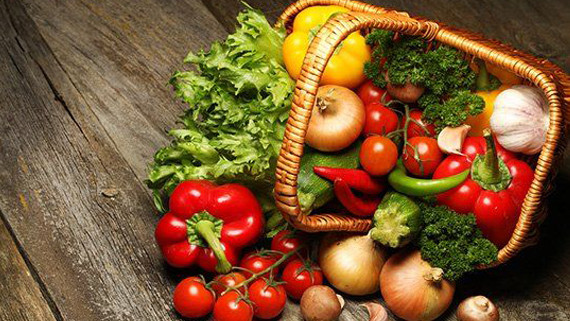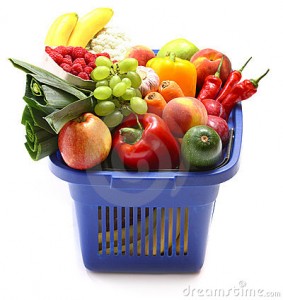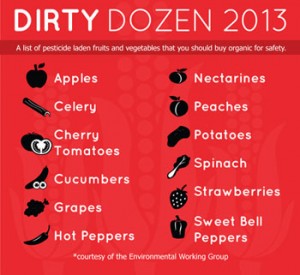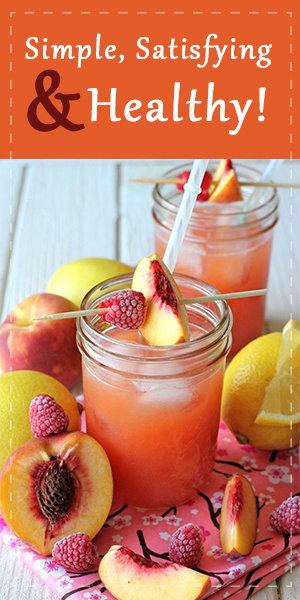The Ultimate Shopping Guide to Avoid Pesticides and GMOs

Buying organic is one of the best, and easiest, things you can do for your health. For some of us though the thought of buying every single thing with the extra price of organic can be a daunting thought. The reason organic food is more expensive is because the label for “certified organic” is pricey which when you think about it doesn’t make much sense. We put taxes on some of the things that can kill us, like cigarettes and alcohol, but food loaded with harmful pesticides and GMO’s are not only not taxed but sometimes subsidised and made afforadble – much more affordable than the organic version that isn’t loaded with harmful ingredients.
Keeping Costs Down.
If you want to keep your costs and your intake of chemicals down the easiest way to do it is to focus on buying those products with the highest amount of pesticides, or most risk of being genetically modified, organic. The Environmental Working Group publishes a list every year which lists the produce that has been found to have the most, and the least, amounts of trace pesticides. Unfortunaltey washing and/or peeling doesn’t get rid of these pesticides since they penetrate the entire thing.
Understanding the Dirty Dozen.
The dirty dozen are the 12 fruits and vegetables that the EWG has found to be the most contamintated. For the past 2 years it has had to expand its list and has created the dirty dozen plus list. The “plus” list contains two crops which didn’t meet the traditional criteria but were found to be commonly contaminated with pesticides that are especially toxic to the nervous system. Even though some of these pesticides have been restriceted there are still lingering traces found in foods years after they’ve stopped being used. These pesticides are known as organophosphates and have been classified as neurotoxins that can affect children IQ and brain development even in low doses, and organochlorine pesticides which studies have linked to cancer, neurological damage, abnormal immune system function, birth defects, respiratory illness and Parkinsons disease. So these are the foods that you really want to buy organic all the time and avoid at restaurants unless they are organic. You may think ordering a side of vegetables at a restaurant is a healthy choice but in actuality you may be choosing vegetables loaded with chemicals that are most damaging to your health.
The Dirty Dozen PLUS. This is the most recent list, from 2013.
Apples
Celery
Cherry Tomatoes
Cucumbers
Grapes
Hot Peppers
Imported Nectarines
Peaches
Potatoes
Spinach
Strawberries
Sweet Bell Peppers
PLUS:
Kale/Collard Greens
Summer Squash
Avoiding GMOs.
Genetically modified foods have been linked to more health problems than I can list including cancer. Here are some Myths and Truths about GMO’s including studies and research published by the Non-GMO project. I’m a firm believer that you should stay away from these just as much as the foods on the dirty dozen. Many of these products, especially corn and soy, are found in processed foods and GMO corn is typically used in animal feed. Always read your labels and look for products free of any corn, soy or items from the dirty dozen plus list that aren’t organic. There are however some crops typically found in supermarkets that are likely to be GMO and since the U.S doesn’t requre labeling of GMO produce it is safer to just buy these organic. According to The Non-GMO Project there are 8 crops you should avoid as well as animal by-products because of the common use of GMOs in animal feed. Here’s the list:
Corn
Soy
Hawaiian papaya
zucchini/ summer squash
sugar beets
alfa alfa
canola
cotton
meat
dairy
eggs
honey
*from my understanding GMO pineapples from Costa Rica have also started being produced so this might make an appearance on the updated list this year.
GMOs also show up in processed food labels as:
Amino Acids, Aspartame, Ascorbic Acid, Sodium Ascorbate, Vitamin C, Citric Acid, Sodium Citrate, Ethanol, Flavorings (“natural” and “artificial”), High-Fructose Corn Syrup, Hydrolyzed Vegetable Protein, Lactic Acid, Maltodextrins, Molasses, Monosodium Glutamate, Sucrose, Textured Vegetable Protein (TVP), Xanthan Gum, Vitamins, Yeast Products.
Clean Foods that are Not as toxic
The EWG also publishes a list known as the Clean 15. This produce, although still containing pesticides, are those with the lowest amounts of trace pesticides so if you’re on a budget these are the ones that aren’t so bad to purchase conventional instead of organic.
Asparagus
Avocado
Cabbage
Cantaloupe
Eggplant
Grapefruit
Kiwi
Mango
Mushrooms
Onions
Pineapples
Frozen Sweet Peas
Sweet Potatoes
Sweet Corn and Papaya (I still recommend avoiding these because of the probability of being genetically engineered).
Organic also happens to be much more nutritious than conventional
just check out this nifty chart













